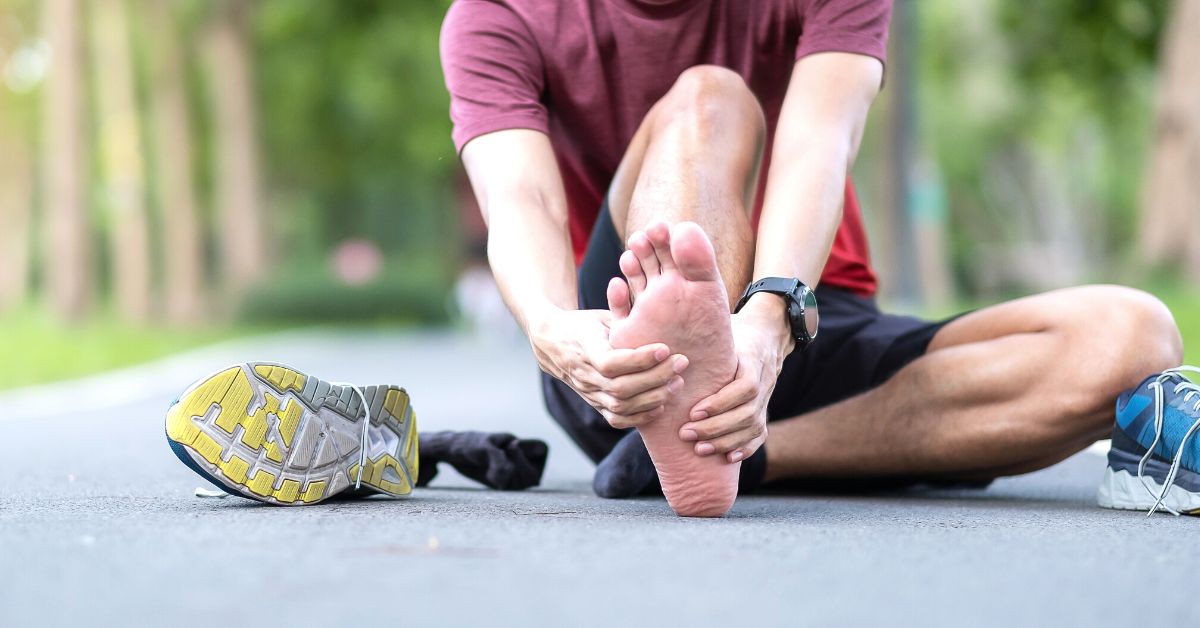Let’s explore 5 of the most common foot health issues in men.
Plantar Fasciitis
The plantar fascia is the connective tissue that supports your arch at the bottom of your feet. Plantar Fasciitis is the inflammation of the plantar fascia, usually at its origin. There are a variety of causes such as unsupportive footwear, weight gain, overuse or increased intensity of use of the plantar fascia, or even the way you walk.
Plantar Fasciitis is probably the most common cause of heel pain among men. The most common symptoms are aches in the midfoot when getting out of bed in the morning or after long periods of sitting or standing.

What can podiatrists do for Plantar Fasciitis?
First of all, we can determine if it is in fact Plantar Fasciitis causing the heel pain or something else. Depending on the location of the pain and the symptoms, the heel pain may be caused by a variety of things. These include bursitis, nerve damage or even a stress fracture! Treatments include orthotic therapy, shockwave therapy, taping and stretching and strengthening programs. Learn more about Plantar Fasciitis.
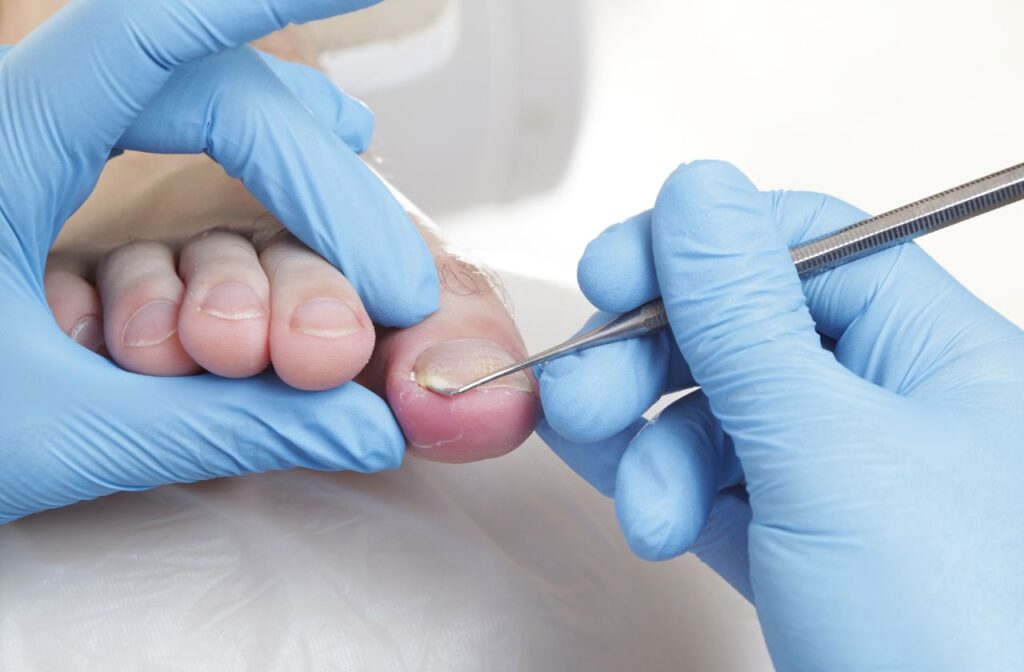
Ingrown Toenails are one of the most common foot health issues in men
Ingrown toenails occur when one or both sides of a nail start to pierce into the skin causing redness and swelling and in severe cases infections. Due to the amount of nerves in your toes making it quite sensitive, ingrown toenails can be uncomfortable for some and for others can cause severe pain.
Ingrown toenails affect teenagers more than adults and occur in men more than women. This is probably due to the fact that teenagers are still growing and outgrow their shoes fairly quickly. Ingrown toenails can be caused due to poor footwear but the main cause is genetics. Such as the way you walk, the amount of sweat you produce in your feet and the amount of skin around your nail.
What can podiatrists do for Ingrown Nails?
Your podiatrist will treat your ingrown toenails in one of two ways. Conservative treatment involves regular trimming and removing of the affected nail. Ingrown toenail surgery is a minor surgical procedure that permanently removes the ingrown part of the nail. Learn more about ingrown toenails.
Diabetes
Diabetes occurs when you have an abnormally high level of sugar in your blood. Your body can naturally take away some sugar in your blood, but when there’s too much over a long period of time, it tends to affect the body.
On average, men are more likely to develop diabetes. There are two ways you can have diabetes, one being born with it, or two eating too much junk food and sugary drinks. This can affect the body, such as blood supply and the nerves where diabetes can affect the furthest thing away from your body which is your feet!
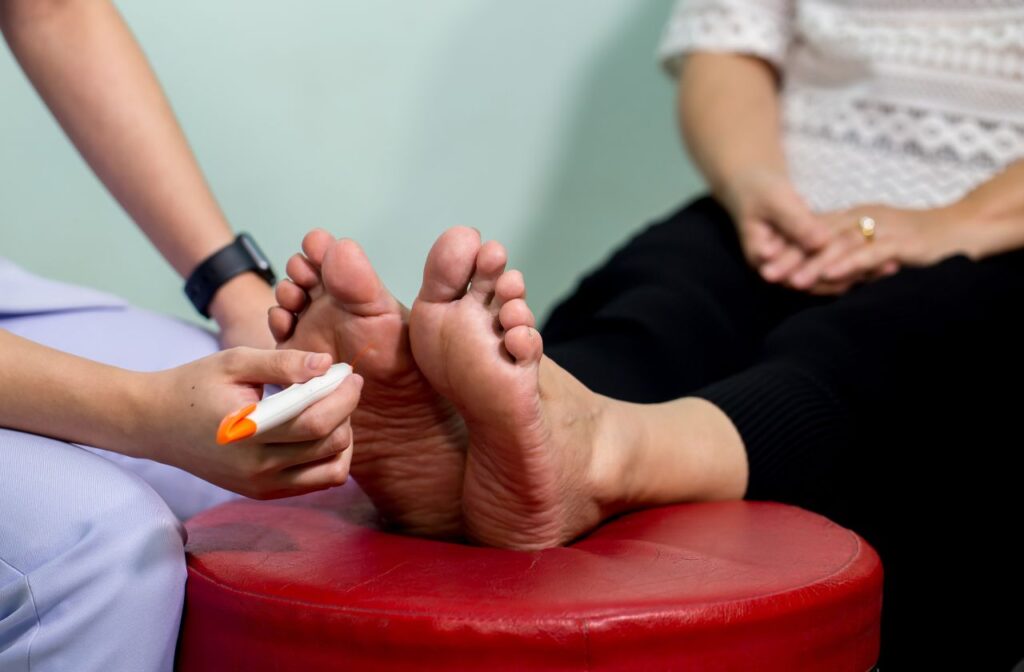
What can podiatrists do for Diabetes?
Your podiatrist will routinely check:
- Blood flow to the bottom of your feet and assess the functionality of the nerves.
- Joint range of motion and muscle strength.
- Foot structure and gait analysis
- Look for changes in the skin and nails such as; fungal infections, calluses, corns, dry skin and cracked heels. This is crucial to avoid injury and keep you walking without pain.
Achilles Tendonitis
Achilles Tendonitis can be described as pain and swelling behind the heel, ankle or lower leg caused by inflammation of the tendon. It occurs gradually or after a sudden increase in your level of activity without adequate training or conditioning. One of the most common problems encountered by athletes and has a high occurrence amongst middle aged athletes, this is due to losing muscle mass once hitting ages thirty or older.
There are two types of achilles tendonitis depending on the location, you have the midportion achilles tendinopathy, or the insertional achilles tendinopathy in which the names basically tell you where the pain and swelling is occurring. The insertional achilles is near the bottom of the back of the heel, while the midportion achilles is where the thinnest part of the achilles is located.
What can podiatrists do for Achilles Tendonitis?
Like with all conditions, firstly we need to determine if it is achilles tendonitis or something completely different based on clinical testing. If we determine that it is achilles tendonitis we will try to find the reason why the swelling is happening and what is causing it through biomechanical assessments as it may be due to the way you walk! We would then try to treat the problem that is causing the condition through a wide range of solutions.
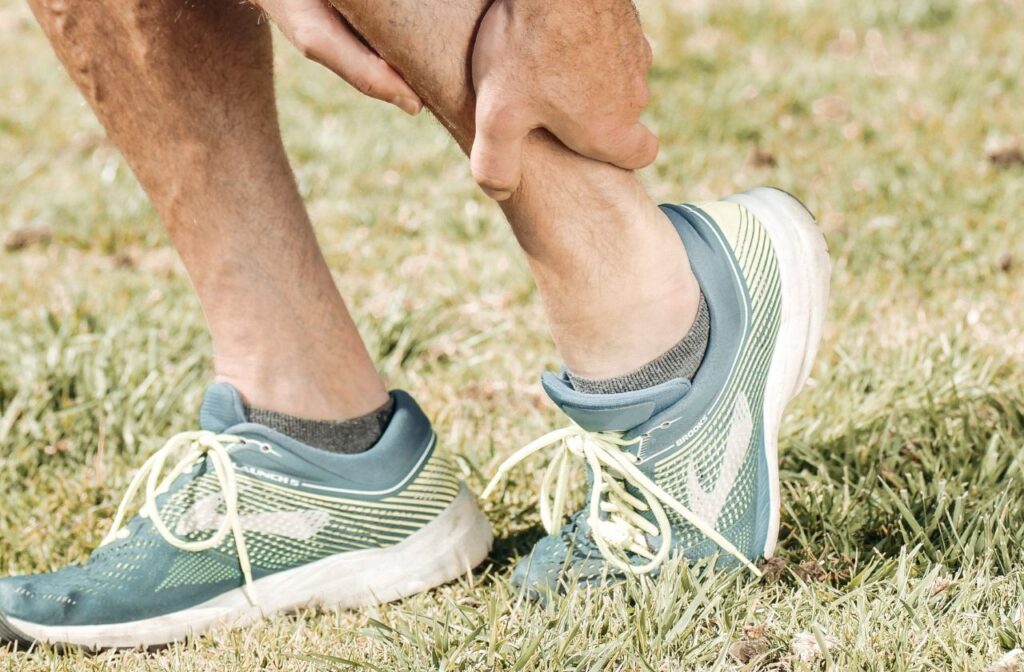
Calluses and corns
Calluses are thickened, hard skin that occur on the foot in areas that receive increased friction or pressure. Corns appear as a horny thickening of the skin on the toes or beneath the foot. This thickening appears as a cone shaped mass pointing down into the skin and is often surrounded by callus. They are actually a normal and natural way for the body to protect itself and if the pressure continues the skin gets thicker and usually becomes painful.
Men typically tend to have a 20-25 percent thicker skin than females, therefore technically develop calluses and corns more often. There is the normal callus which appears on your feet, and three types of corns: the seed corn which have many tiny corns in a certain area, the soft corn which usually appears in between your toes, and the hard corn which is a localised area of corn which feels like it’s stabbing you.
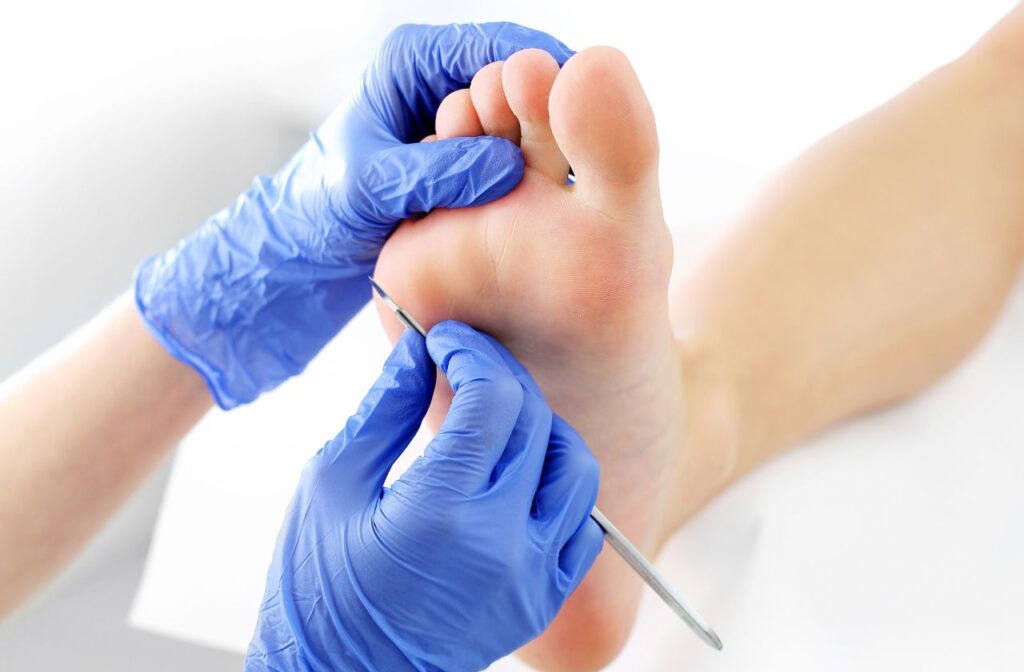
What can podiatrists do for calluses and corns?
We care for calluses and corns by providing general foot care. This is a general tidy up and removal of any corns that cause discomfort as well as nail trim and callus removal.
Is one of these common foot health issues in men bothering you?
If you are experiencing foot pain or discomfort, take action. Our podiatrists have the skills and experience to assist you with any foot complaint and help get you walking without pain.
If you are unsure what’s right for you and whether you need assistance, book a one-off consultation with your podiatrist to discuss your concerns.


